

Echeveria is a succulent plant family with evergreen leafage.
Key Echeveria facts
Name – Echeveria
Family – Crassulaceae
Type – succulent plant, perennial
Height – 8 inches (20 cm) with flower
Propagation – pups, leaf props
Exposure: well-lit – Soil: light, very well-drained – Flowering: summer
The care it calls for is minimal, but these simple practices will make each echeveria look even nicer.
This plant is suited to mild climates, and should preferably be cultivated indoors if you fear frost. Indeed, the slightest frost would kill it.
It’s a great idea to grow Echeveria indoors: it doesn’t need much care and keeps unfurling leaves at a regular and satisfying rhythm.
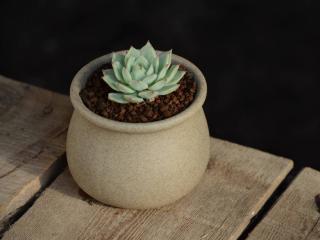 You may repot your echeveria just after purchasing it if you’ve purchased it while it wasn’t flowering.
You may repot your echeveria just after purchasing it if you’ve purchased it while it wasn’t flowering.Extra important: make sure your pot has a hole for excess water to drain out. Cute pots must be drilled through underneath.
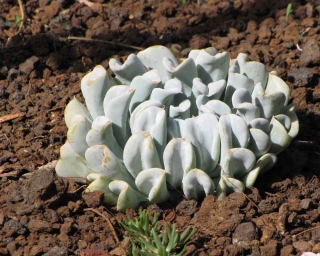 If planting outside, prefer full sun exposure.
If planting outside, prefer full sun exposure.Echeveria produces small suckers at the base of stems, and these can be replanted and take root easily.
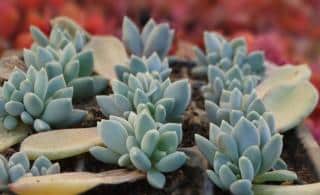 Carefully detach a small rosette from the stem.
Carefully detach a small rosette from the stem.Although caring for echeveria is relatively straightforward, a few tips will help you grow a very nice, long-living plant:
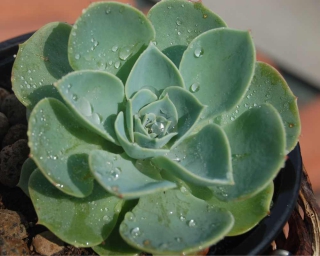 Remove wilted flowers regularly (deadheading).
Remove wilted flowers regularly (deadheading).The lifespan of an Echeveria plant can range anywhere from 3 years to several decades depending on the variety, care, and growing conditions.
Make sure you always have a few leaf props going from your favorite variety if ever it unexpectedly dries up or mushes out!
When an echeveria doesn’t get enough light, it starts growing tall. Leaves are sparse around a long, thin stem. This means the plant is reaching for light.
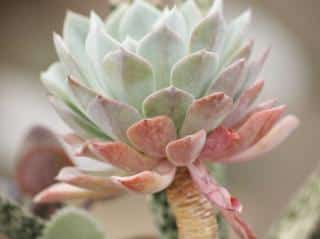
Once the problem of your echeveria lacking light is solved, you can behead the succulent:
You can use the leaves from the remaining stem to prepare cuttings, as a form of leaf propagation. The slang for this is called “leaf props“.
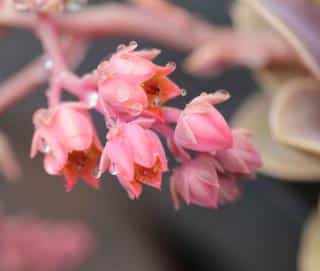 During the blooming, 1 to 2 waterings a week, only when the soil has dried well.
During the blooming, 1 to 2 waterings a week, only when the soil has dried well.In any case, it is important to wait for the soil to have dried well before watering, in which case it is also better to water once rarely with a significant amount instead of many moderate sessions.
BE CAREFUL! Leaves from succulents are loaded with water. If they start collapsing, it’s a sign that they need more water.
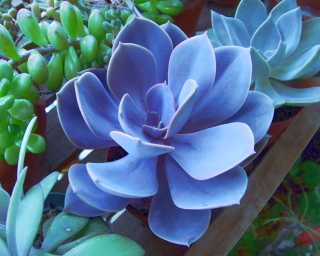
With its reduced need for care, it poses practically no difficulty to the caretaker.
Although excess water is what most often kills it, it also likes having alot of light, but not scorching direct sun, as when behind a window. This would cause echeveria sunburn.
You can set it in a pot or a garden box, along edges or on rocky ground.
Amending the soil with organic fertilizer will favor blooming, so you must take care not to provoke this during the Echeveria’s dormant state, from October to February.